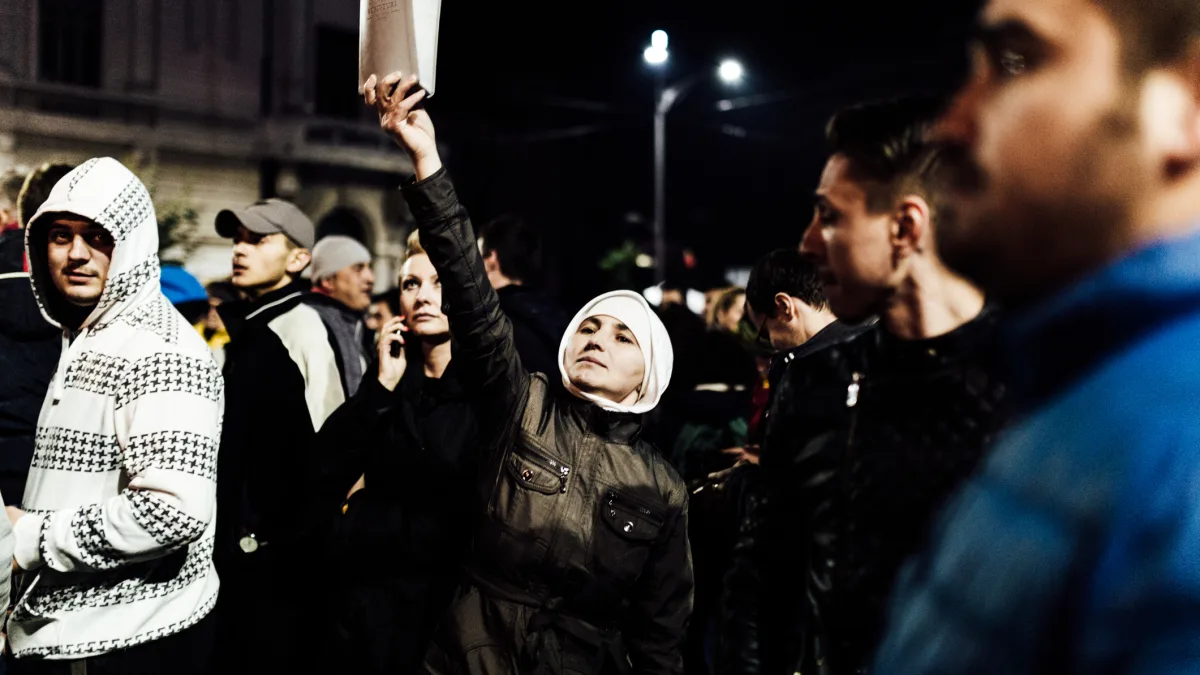A generation ago, a bright school leaver could walk into a bank and emerge thirty years later as a manager, perhaps even an executive. Those days are as dead as the three-martini lunch. Today’s aspiring banker needs not just a degree, but increasingly a master’s—and preferably from a name-brand institution. The job hasn’t changed much, but the paper trail required to get it has grown exponentially.
Welcome to Europe’s credential arms race, where qualifications have become like military expenditure during the Cold War: each side keeps adding more, not because it makes anyone safer, but because falling behind feels like surrender.
The great qualification inflation
In England, 37 per cent of employees aged 25 and older hold qualifications exceeding the requirements of their jobs—the highest rate among member countries of the Organisation for Economic Co-operation and Development (OECD). This represents a sharp rise from around 30 per cent in 2012. Across Europe, the trend is equally troubling. According to the European Centre for the Development of Vocational Training (CEDEFOP), 25 per cent of young European tertiary education graduates in 2019 were overqualified, and the share of EU workers with skills that did not match their jobs reached 45 per cent.
The phenomenon has a name: credential inflation, or what economists more colourfully call ‘diploma disease’. It works much like monetary inflation—too much paper chasing too few genuine opportunities. The result is predictable: yesterday’s luxury becomes today’s necessity, and what once distinguished the exceptional candidate now barely gets you through the door.
Consider physical therapy, a profession that required only a bachelor’s degree in the late 1980s. By the 1990s, a master’s became expected. Today, a doctorate is becoming the norm. The actual work—helping people recover from injuries—remains fundamentally unchanged. But the credentialing machinery has marched relentlessly forward.
The European divergence
Not all of Europe’s economies have succumbed equally to this academic fever. The rise was most substantial in Slovenia, Slovakia, Czechia, Poland, Italy and Greece. Germany, with its robust apprenticeship system, has shown more resistance. But even there, pressure is mounting as multinational corporations apply standardised hiring practices across borders.
The reasons vary by country. In Eastern Europe, the post-communist embrace of higher education as a path to middle-class respectability created an oversupply of graduates for economies still developing professional services sectors. Mediterranean countries saw universities expand massively without corresponding job creation in knowledge-intensive industries.
France presents a particularly acute case study. Its grandes écoles system has long served as a credentialing arms race made manifest—elite institutions producing elite graduates for elite positions. The system works admirably for those at the top, but has pushed credential requirements ever higher for everyone else.
The wage penalty
The economic consequences are measurable and mounting. English workers who reported being overqualified earned nearly 18 per cent less than peers with similar qualifications who were appropriately matched to their roles. Across Europe, graduates’ real wages trended predominantly downward over the decade leading up to 2015, varying considerably between countries.
This wage penalty reflects a basic economic reality: when supply exceeds demand, prices fall. Europe has been producing graduates faster than it can create graduate-level jobs. The supply of tertiary graduates increased everywhere and converged, while the growth of graduate jobs was slower, not ubiquitous and non-convergent.
The irony is particularly bitter for young Europeans. They were sold higher education as an insurance policy against economic uncertainty, only to discover they had bought coverage for risks that never materialised while leaving themselves exposed to new ones.
The productivity paradox
Perhaps most perversely, all this additional education doesn’t seem to be making Europe more productive. Skills mismatch—having people do jobs they’re overqualified for—acts as a brake on productivity growth. This mismatch, especially in the green and digital fields, affects EU growth and competitiveness.
The problem is structural. When graduate-level jobs grow more slowly than graduate supply, the excess flows downward into positions that don’t require advanced education. This crowds out less-educated workers and creates a cascade of overqualification throughout the labour market.
Meanwhile, genuinely productive sectors—skilled trades, technical roles, specialised manufacturing—struggle to attract workers. Young Europeans have been taught that university is the only respectable path, leading to shortages in areas where demand actually exists.
Gaming the system
Employers bear significant responsibility for this mess. Faced with hundreds of applications for routine positions, HR departments use degree requirements as a lazy filtering mechanism. It’s easier to demand a bachelor’s degree than to devise meaningful assessments of actual job-relevant skills.
This creates a vicious cycle. As more jobs require degrees, more students pursue them. Universities, responding to demand, expand programmes and lower admission standards. Quality dilutes, forcing employers to look for ever-higher credentials to signal genuine achievement.
Professional associations have been willing accomplices. Raising entry requirements serves the dual purpose of limiting competition and boosting the prestige of existing practitioners. Lawyers, accountants, therapists, and countless other professions have steadily ratcheted up their credentialing requirements, often with little evidence that additional training improves performance.
The London exception
London offers a glimpse of what happens when credential inflation meets genuine demand for high-skilled work. The clustering of professional services in London has created a ‘self-reinforcing cycle’ that cannot be solved simply by moving civil service departments to regional locations.
The capital’s concentration of graduate-level jobs means its overqualification rates are lower than the national average.
But this creates its own problems: a two-speed economy where opportunities cluster in an increasingly expensive city, while degree-holders elsewhere find themselves competing for jobs that don’t require their qualifications.
Breaking the cycle
The solution isn’t to blame universities for producing too many graduates, despite what education critics suggest. England’s education system is not producing too many graduates. Instead, its economy and further education system fail to provide sufficient opportunities to harness the potential of those not bound for higher education.
What Europe needs is a wholesale rethinking of how skills are developed and valued. This means revitalising vocational education, encouraging alternative pathways into careers, and—perhaps most critically—persuading employers to judge candidates on ability rather than credentials.
Some countries are making progress. Germany’s apprenticeship model continues to produce skilled workers without degree inflation. Switzerland has maintained strong vocational pathways that command respect and decent wages. These aren’t nostalgic throwbacks but modern approaches to human capital development.
The real cost
The credential arms race exacts costs beyond individual disappointment. It wastes human capital, misallocates resources, and reinforces class divisions. Worse, it creates a false meritocracy where paper qualifications matter more than actual competence.
For young Europeans, the choice has become artificial: pursue higher education regardless of aptitude or interest, or accept diminished prospects. This isn’t freedom; it’s a particularly sophisticated form of coercion. The UK has seen a faster increase in graduate numbers compared to similar economies, with 60 per cent of young adults now holding a degree, one of the highest proportions in the OECD.
The arms race metaphor is apt in another sense: like military buildups, credential inflation makes everyone less secure while enriching only the suppliers—in this case, universities and credentialing bodies. The solution, as with arms races, requires coordinated action to step back from a collectively destructive dynamic.
Europe’s policymakers would do well to remember that education should develop human potential, not merely sort people into hierarchies. Breaking the credential arms race won’t be easy, but the alternative—a continent of overqualified baristas with student debt—hardly seems appealing.
Photo: Dreamstime.







